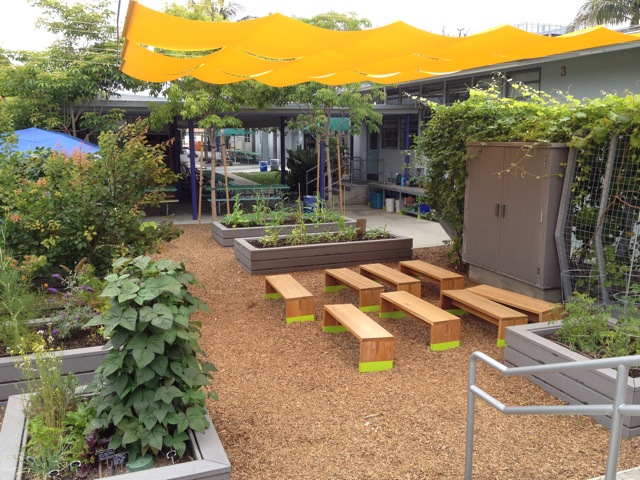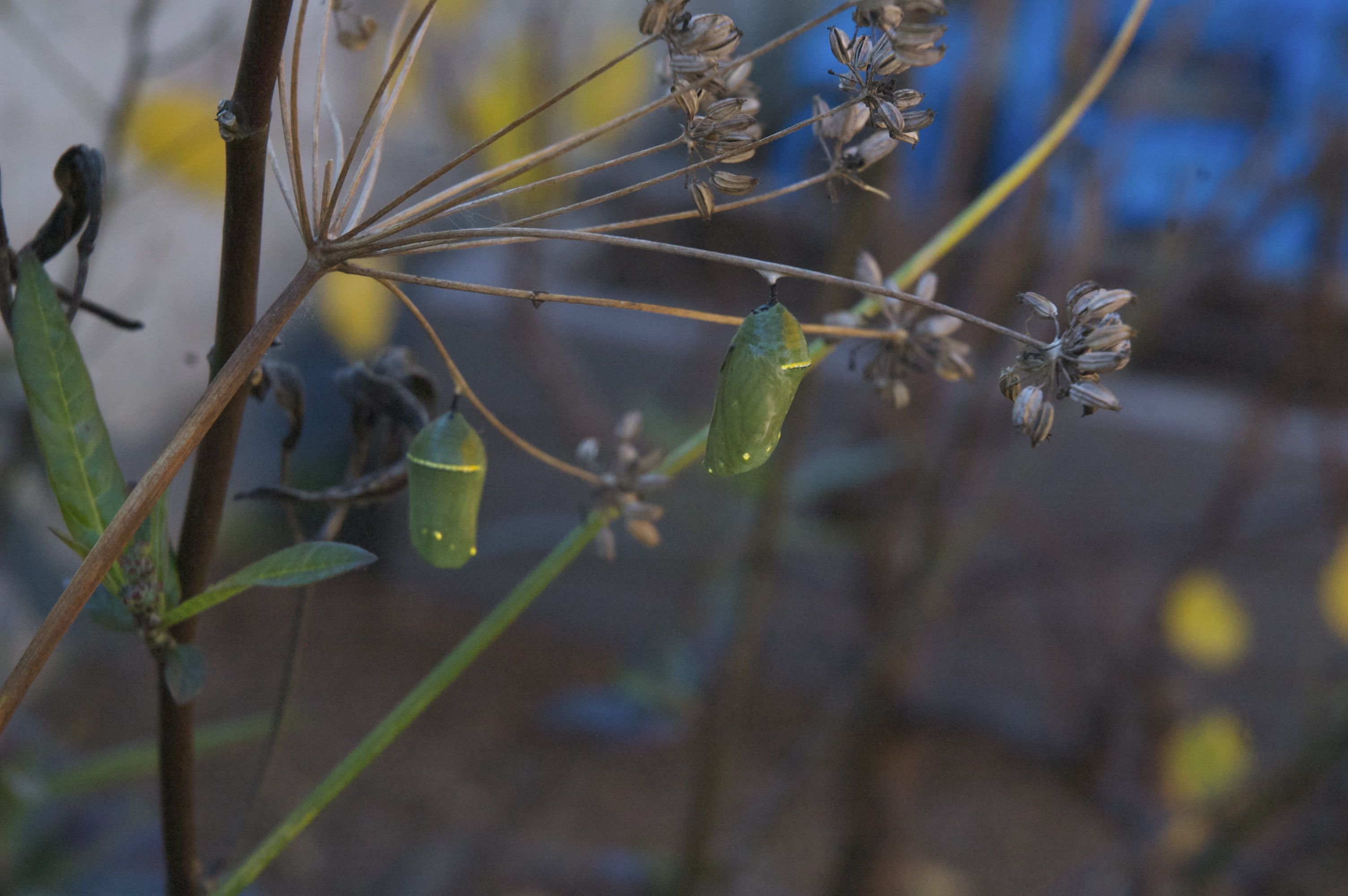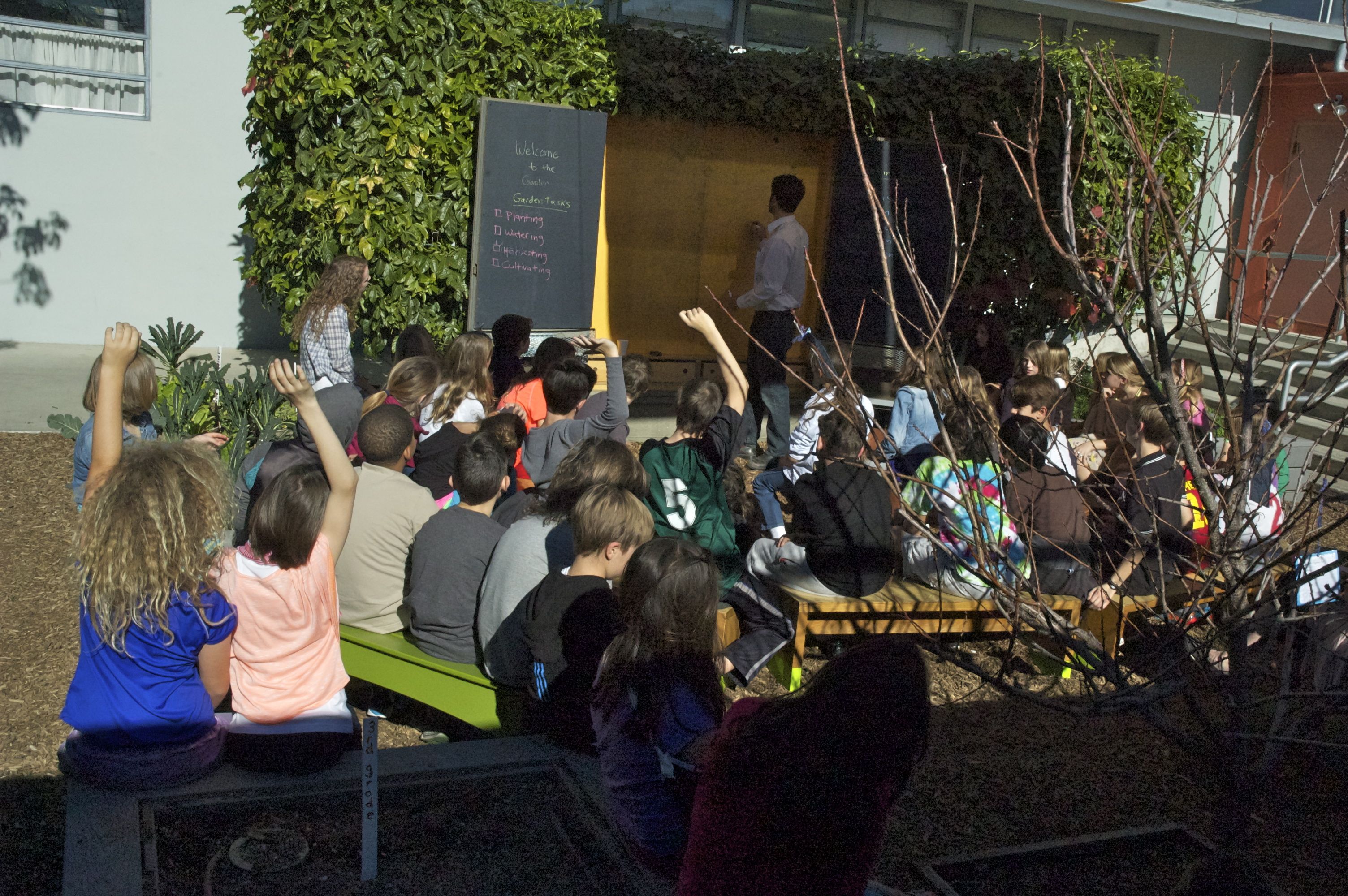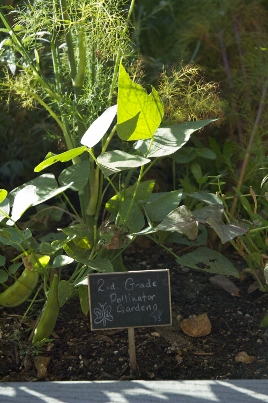The gorgeous Wildwood School garden takes inspiration from Richard Louv’s national bestseller Last Child in the Woods a popular read for the Wildwood School community during their elementary campus outdoor space renovation a few years ago. In the book, Louv comes to a startling conclusion: Today’s children can likely tell you more about the Amazon than they can about the last time they went on a hike. More and more, urban children are becoming alienated from nature—and it’s not healthy. In fact, Louv reports that researchers find a direct link between nature and children’s physical and emotional well-being.

Wildwood School built a lively area called the Outdoor Classroom that features raised planting beds, trees, an outdoor whiteboard, and classroom area. Besides caring for their gardens, students study sustainability, life cycles, social and cultural implications connections to agriculture, and their roles as stewards of the Wildwood gardens. It’s a welcoming environment for art, math, and science lessons.


Students compost, plant, maintain, and harvest in the garden. There are seven raised beds, fruit trees, vines, a composting area, worm bins, a pollinator habitat, and a gathering area. The garden plantings are related to grade level curriculum. For example, when 5th grade students were studying the founding of the United States they planted a colonial herb bed. When 4th grade students were studying the Spanish influence on early California they planted a salsa garden.

Students have studied water systems, conducted soil tests, and prepared meals from their harvest. One of the most important components of the school garden is the role the garden plays in bringing the school’s community together.

Wildwood’s student Community Involvement Leadership Team conducts presentations about sustainability and environmental responsibility for fellow students. They have also carried out a lunch table composting system so all students compost every day.


Let’s be social! Like Beyond The Brochure on Facebook or Follow us on Twitter. Are you more the email type? Get our posts in your in box by subscribing (enter your email in the “subscribe” box on the right sidebar of the blog. Or, buy the Second Edition of our book at Amazon.com or your local bookstores!